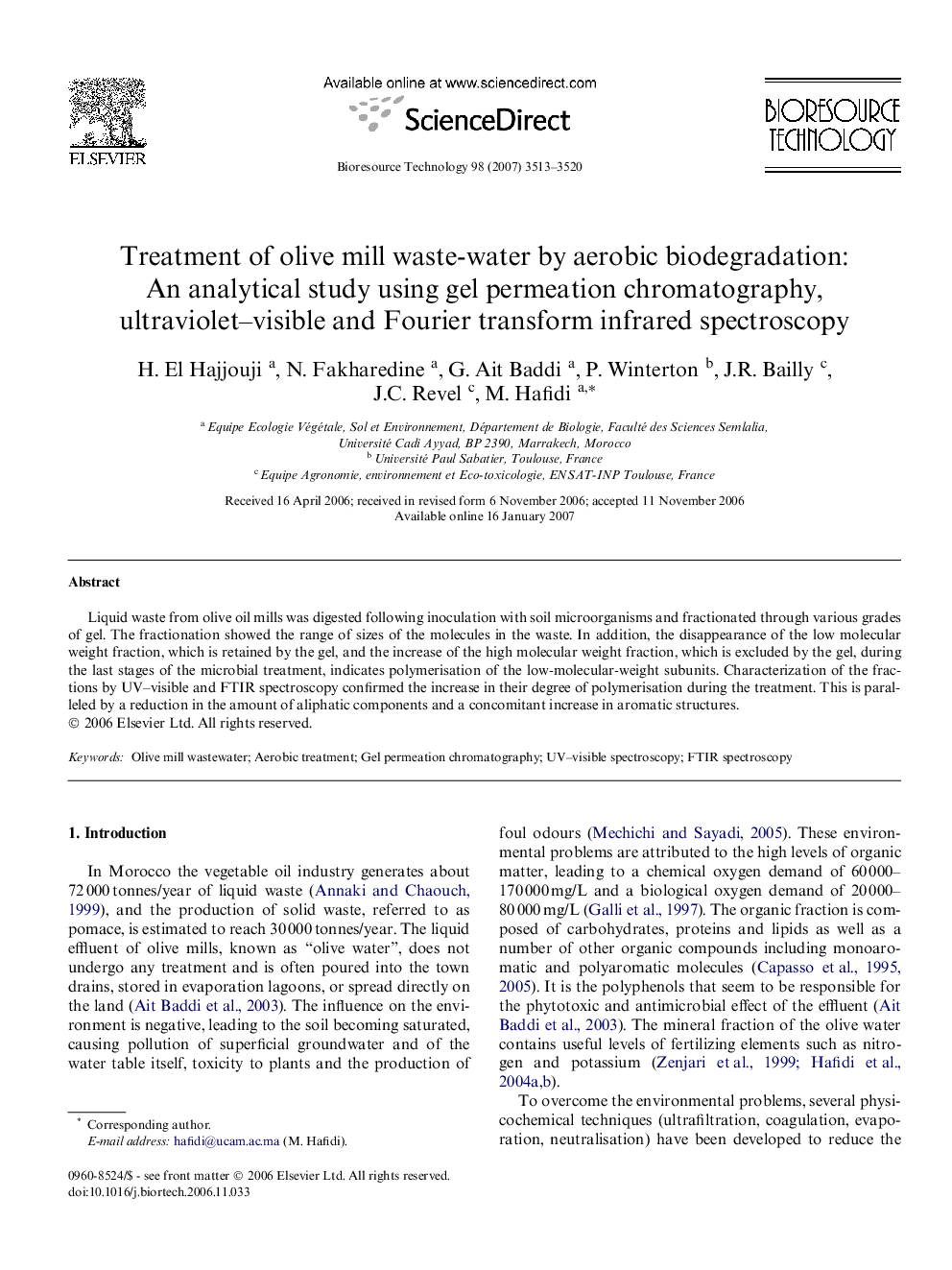| Article ID | Journal | Published Year | Pages | File Type |
|---|---|---|---|---|
| 686202 | Bioresource Technology | 2007 | 8 Pages |
Liquid waste from olive oil mills was digested following inoculation with soil microorganisms and fractionated through various grades of gel. The fractionation showed the range of sizes of the molecules in the waste. In addition, the disappearance of the low molecular weight fraction, which is retained by the gel, and the increase of the high molecular weight fraction, which is excluded by the gel, during the last stages of the microbial treatment, indicates polymerisation of the low-molecular-weight subunits. Characterization of the fractions by UV–visible and FTIR spectroscopy confirmed the increase in their degree of polymerisation during the treatment. This is paralleled by a reduction in the amount of aliphatic components and a concomitant increase in aromatic structures.
